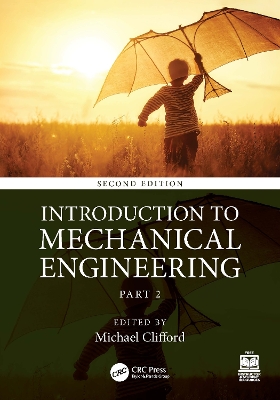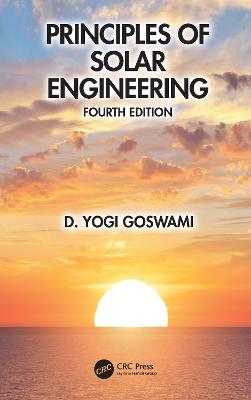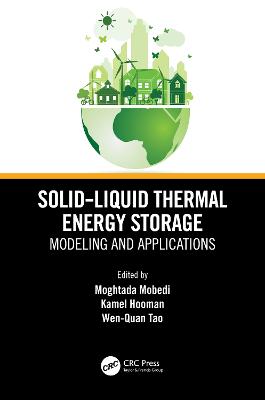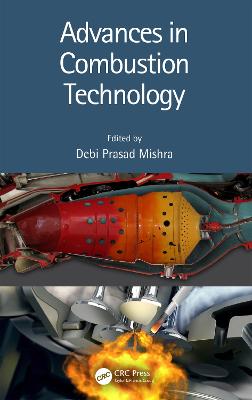Dynamic Simulation of Sodium Cooled Fast Reactors
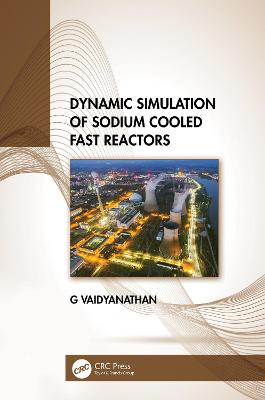 portes grátis
portes grátis
Dynamic Simulation of Sodium Cooled Fast Reactors
Vaidyanathan, G
Taylor & Francis Ltd
11/2022
256
Dura
Inglês
9781032254357
15 a 20 dias
662
Descrição não disponível.
Chapter 1 Introduction
1.1 General
1.2 Basics of Breeding
1.3 Uranium Utilization
1.4 Components of Fast Reactors
1.5 Overview of Fast Reactor Programs
1.6 Need for Dynamic Simulation
1.7 Design Basis
1.8 Plant Protection System
1.9 Sensors and Response Time
1.10 Scope of Dynamic Studies
1.11 Modelling Development
References
Assignment
Chapter 2 Description of Fast Reactors
2.1 Introduction
2.2 Fast Breeder Test Reactor (FBTR)
2.2.1. Reactor Core
2.2.2 Reactor Assembly
2.2.3. Sodium Systems
2.2.4 Decay Heat Removal
2.2.5 Generating Plant
2.2.6 Instrumentation and Control
2.2.7 Safety
2.3 Prototype Fast Breeder Reactor
2.3.1 Reactor Core
2.3.2 Reactor Assembly
2.3.3 Main Heat Transport System
2.3.4 Steam Water System
2.3.5 Instrumentation and control
2.3.6 Safety
2.4 Neutronic Characteristics of FNRs
2.5 Thermal-Hydraulic Characteristics of FNR
References
Assignment
Chapter 3 Reactor Heat Transfer
3.1 Introduction
3.2 Reactor Core
3.2.1 Core Description
3.2.2 Fuel Pin
3.2.3 Subassembly
3.3 Coolant Selection
3.4 Control Material Selection
3.5 Structural Material Selection
3.6 Heat Generation
3.7 Reactivity Feedback
3.7.1 Doppler Effect
3.7.2 Sodium Density and Void Effects
3.7.3 Fuel Axial Expansion Effect
3.7.4 Structural Expansion
3.7.5 Bowing
3.8 Decay Heat
3.9 Solution Methods
3.9.1 Prompt Jump Approximation
3.9.2 Runge Kutta Method
3.9.3 Kaganove Method
3.9.4 Comparison of different Methods
3.9.5 Solution Methodology
3.10 Heat Transfer in Primary System
3.10.1 Core Thermal Model
3.10.2 Fuel Restructuring
3.10.3 Gap Conductance
3.10.4 Fuel Thermal Model
3.10.5 Solution Technique
3.11 Determination of Peak Temperatures: Hot Spot Analysis
3.12 Core Thermal Model validation in FBTR and SUPER PHENIX
3.13 Mixing of Coolant Streams in Upper Plenum
3.13.1 Solution Technique
3.14 Lower Plenum/Cold Pool
3.15 Grid Plate
3.16 Heat Transfer Correlations for Fuel Rod Bundle
References
Assignment
Chapter 4 IHX Thermal Model
4.1 Introduction
4.2 Experience in PHENIX
4.3 Thermal Model
4.4 Solution Techniques
4.4.1 Nodal Heat Balance Scheme
4.4.2 Finite Differencing Scheme
4.5 Choice of Numerical Scheme
4.5.1 Nodal Heat Balance for Unbalanced Flows
4.5.2 Modified Nodal Heat Balance Scheme (MNHB)
4.6 Heat Transfer Correlations
4.7 Validation
References
Assignment
Chapter 5 Thermal Model of Piping
5.1 Introduction
5.2 Thermal Model
5.3 Solution Methods
5.4 Comparison of Piping Models
References
Assignment
Chapter 6 Sodium Pump
6.1 Introduction
6.2 Electromagnetic Pumps
6.3 Centrifugal Pump
6.3.1 Pump Hydraulic Model
6.3.2 Pump Dynamic Model
6.3.3 Pump Thermal Model
References
Assignment
Chapter 7 Transient Hydraulics Simulation
7.1Introduction
7.2Momentum Equations
7.3Free Level Equations
7.4Core Coolant Flow Distribution
7.5IHX Pressure Drop Correlations
7.5.1 Resistance Coefficient for Cross Flow
7.5.2. Resistance Coefficient for Axial Flow
7.6 Pump Characteristics
7.7 Computational Model
7.8 Validation Studies
7.9 Secondary Circuit Hydraulics
7.9.1 Secondary Hydraulics Model
7.9.2 Natural Convection Flow in Sodium-Validation Studies
References
Assignment
Chapter 8 Steam Generator
8.1 Introduction
8.2 Heat Transfer Mechanisms
8.3 Steam Generator Designs
8.3.1. Conventional Fossil Fuelled Boilers
8.3.1.1 Drum Type
8.3.1.2 Once Through Steam Generators
8.3.2 Sodium Heated Steam Generators
8.4 Thermodynamic Models
8.5 Mathematical Model
8.6 Heat Transfer Correlations
8.6.1 Single Phase Liquid Region
8.6.2 Nucleate Boiling
8.6.3 Dry-Out
8.6.4 Post Dry-Out
8.6.5 Superheated Region
8.6.6 Sodium Side Heat Transfer
8.7 Pressure Drop
8.8 Computational Model
8.8.1Solution of Water /Steam Side Equations
8.8.2 Solution of Sodium, Shell, And Tube Wall Equations
8.9 Steam Generator Model Validation
References
Assignment
Chapter 9 Computer Code Development
9.1 Introduction
9.2 Organization of DYNAM
9.3 Axisymmetric Code STITH-2D
9.4 Comparison of Predictions of DYANA-P And DYANA-HM
References
Chapter 10 Specifying Sodium Pumps Coast-Down Time
10.1 Introduction
10.2 Impact of Coast Down Time in Loop Type FNR
10.3 Impact of Coast Down Time in Pool Type FNR
10.4 Considerations for Deciding Flow Coast Down Time
10.5 Scram Threshold Vs Coast Down Time
10.5.1. FHT Effect on Maximum Temperatures
10.5.2 FHT to Avoid Scram for Short Power Failure
10.6 Secondary pump FHT
10.7 Primary FHT for Unprotected Loss of Flow
References
Assignment
Chapter 11 Plant Protection System
11.1 Introduction
11.2 Limiting Safety System Settings for FBTR
11.2.1 Safety Signals and Settings
11.2.2 Limiting Safety System Adequacy for FBTR
11.3 Limiting Safety System Settings for PFBR
11.3.1 Design Basis Events
11.3.2 Core Design Safety Limits
11.3.3 Selection of Scram Parameters
11.4 Shutdown System
11.5 Event Analysis
References
Assignment
Chapter 12 Decay Heat Removal System
12.1 Introduction
12.2 Natural Convection Basics
12.3 DHR System Options in FNR
12.3.1 DHR in Primary Sodium
12.3.2 DHR in Secondary Sodium
12.3.3 Steam Generator Auxiliary Cooling System
12.3.4 DHR Through Steam-Water System
12.3.5 Reactor Vessel Auxiliary Cooling System
12.4 DHR in FBTR
12.4.1 Heat Removal By Air In SG Casing
12.4.2 Loss of Offsite and Onsite Power with SG Air Cooling
12.4.3 Loss Of Offsite And Onsite Power Without Reactor Trip
12.5 DHR in PFBR
12.5.1 Thermal Model
12.5.2 Decay Heat Exchanger (DHX) Model
12.5.3 Hot Pool Model
12.5.4 Air Heat Exchanger Model (AHX) Model
12.5.5 Piping
12.5.6 Expansion Tank
12.5.7 Air Stack/Chimney
12.5.8 Hydraulic Model
12.5.9 DHDYN Validation on SADHANA Loop
12.6 Role of Inter Wrapper Flow
12.7 Role of Secondary thermal capacity
References
Assignment
Chapter 13 Modelling of Large Sodium-Water Reaction
13.1 Introduction
13.2 Leak Rate
13.2.1 Water Leak Rate model
13.2.2 Steam leak rate model
13.3 Reaction site dynamics
13.3.1 Spherical bubble model
13.3.2 Columnar bubble model
13.3.3 Solution technique
13.3.4 Validation of Reaction site model
13.4 Sodium Side System Transient
13.5 Discharge Circuit System Transient
13.6 Analysis of Pressure Transients for PFBR
13.7 Failure of a greater number of tubes than design basis leak
References
Assignment
1.1 General
1.2 Basics of Breeding
1.3 Uranium Utilization
1.4 Components of Fast Reactors
1.5 Overview of Fast Reactor Programs
1.6 Need for Dynamic Simulation
1.7 Design Basis
1.8 Plant Protection System
1.9 Sensors and Response Time
1.10 Scope of Dynamic Studies
1.11 Modelling Development
References
Assignment
Chapter 2 Description of Fast Reactors
2.1 Introduction
2.2 Fast Breeder Test Reactor (FBTR)
2.2.1. Reactor Core
2.2.2 Reactor Assembly
2.2.3. Sodium Systems
2.2.4 Decay Heat Removal
2.2.5 Generating Plant
2.2.6 Instrumentation and Control
2.2.7 Safety
2.3 Prototype Fast Breeder Reactor
2.3.1 Reactor Core
2.3.2 Reactor Assembly
2.3.3 Main Heat Transport System
2.3.4 Steam Water System
2.3.5 Instrumentation and control
2.3.6 Safety
2.4 Neutronic Characteristics of FNRs
2.5 Thermal-Hydraulic Characteristics of FNR
References
Assignment
Chapter 3 Reactor Heat Transfer
3.1 Introduction
3.2 Reactor Core
3.2.1 Core Description
3.2.2 Fuel Pin
3.2.3 Subassembly
3.3 Coolant Selection
3.4 Control Material Selection
3.5 Structural Material Selection
3.6 Heat Generation
3.7 Reactivity Feedback
3.7.1 Doppler Effect
3.7.2 Sodium Density and Void Effects
3.7.3 Fuel Axial Expansion Effect
3.7.4 Structural Expansion
3.7.5 Bowing
3.8 Decay Heat
3.9 Solution Methods
3.9.1 Prompt Jump Approximation
3.9.2 Runge Kutta Method
3.9.3 Kaganove Method
3.9.4 Comparison of different Methods
3.9.5 Solution Methodology
3.10 Heat Transfer in Primary System
3.10.1 Core Thermal Model
3.10.2 Fuel Restructuring
3.10.3 Gap Conductance
3.10.4 Fuel Thermal Model
3.10.5 Solution Technique
3.11 Determination of Peak Temperatures: Hot Spot Analysis
3.12 Core Thermal Model validation in FBTR and SUPER PHENIX
3.13 Mixing of Coolant Streams in Upper Plenum
3.13.1 Solution Technique
3.14 Lower Plenum/Cold Pool
3.15 Grid Plate
3.16 Heat Transfer Correlations for Fuel Rod Bundle
References
Assignment
Chapter 4 IHX Thermal Model
4.1 Introduction
4.2 Experience in PHENIX
4.3 Thermal Model
4.4 Solution Techniques
4.4.1 Nodal Heat Balance Scheme
4.4.2 Finite Differencing Scheme
4.5 Choice of Numerical Scheme
4.5.1 Nodal Heat Balance for Unbalanced Flows
4.5.2 Modified Nodal Heat Balance Scheme (MNHB)
4.6 Heat Transfer Correlations
4.7 Validation
References
Assignment
Chapter 5 Thermal Model of Piping
5.1 Introduction
5.2 Thermal Model
5.3 Solution Methods
5.4 Comparison of Piping Models
References
Assignment
Chapter 6 Sodium Pump
6.1 Introduction
6.2 Electromagnetic Pumps
6.3 Centrifugal Pump
6.3.1 Pump Hydraulic Model
6.3.2 Pump Dynamic Model
6.3.3 Pump Thermal Model
References
Assignment
Chapter 7 Transient Hydraulics Simulation
7.1Introduction
7.2Momentum Equations
7.3Free Level Equations
7.4Core Coolant Flow Distribution
7.5IHX Pressure Drop Correlations
7.5.1 Resistance Coefficient for Cross Flow
7.5.2. Resistance Coefficient for Axial Flow
7.6 Pump Characteristics
7.7 Computational Model
7.8 Validation Studies
7.9 Secondary Circuit Hydraulics
7.9.1 Secondary Hydraulics Model
7.9.2 Natural Convection Flow in Sodium-Validation Studies
References
Assignment
Chapter 8 Steam Generator
8.1 Introduction
8.2 Heat Transfer Mechanisms
8.3 Steam Generator Designs
8.3.1. Conventional Fossil Fuelled Boilers
8.3.1.1 Drum Type
8.3.1.2 Once Through Steam Generators
8.3.2 Sodium Heated Steam Generators
8.4 Thermodynamic Models
8.5 Mathematical Model
8.6 Heat Transfer Correlations
8.6.1 Single Phase Liquid Region
8.6.2 Nucleate Boiling
8.6.3 Dry-Out
8.6.4 Post Dry-Out
8.6.5 Superheated Region
8.6.6 Sodium Side Heat Transfer
8.7 Pressure Drop
8.8 Computational Model
8.8.1Solution of Water /Steam Side Equations
8.8.2 Solution of Sodium, Shell, And Tube Wall Equations
8.9 Steam Generator Model Validation
References
Assignment
Chapter 9 Computer Code Development
9.1 Introduction
9.2 Organization of DYNAM
9.3 Axisymmetric Code STITH-2D
9.4 Comparison of Predictions of DYANA-P And DYANA-HM
References
Chapter 10 Specifying Sodium Pumps Coast-Down Time
10.1 Introduction
10.2 Impact of Coast Down Time in Loop Type FNR
10.3 Impact of Coast Down Time in Pool Type FNR
10.4 Considerations for Deciding Flow Coast Down Time
10.5 Scram Threshold Vs Coast Down Time
10.5.1. FHT Effect on Maximum Temperatures
10.5.2 FHT to Avoid Scram for Short Power Failure
10.6 Secondary pump FHT
10.7 Primary FHT for Unprotected Loss of Flow
References
Assignment
Chapter 11 Plant Protection System
11.1 Introduction
11.2 Limiting Safety System Settings for FBTR
11.2.1 Safety Signals and Settings
11.2.2 Limiting Safety System Adequacy for FBTR
11.3 Limiting Safety System Settings for PFBR
11.3.1 Design Basis Events
11.3.2 Core Design Safety Limits
11.3.3 Selection of Scram Parameters
11.4 Shutdown System
11.5 Event Analysis
References
Assignment
Chapter 12 Decay Heat Removal System
12.1 Introduction
12.2 Natural Convection Basics
12.3 DHR System Options in FNR
12.3.1 DHR in Primary Sodium
12.3.2 DHR in Secondary Sodium
12.3.3 Steam Generator Auxiliary Cooling System
12.3.4 DHR Through Steam-Water System
12.3.5 Reactor Vessel Auxiliary Cooling System
12.4 DHR in FBTR
12.4.1 Heat Removal By Air In SG Casing
12.4.2 Loss of Offsite and Onsite Power with SG Air Cooling
12.4.3 Loss Of Offsite And Onsite Power Without Reactor Trip
12.5 DHR in PFBR
12.5.1 Thermal Model
12.5.2 Decay Heat Exchanger (DHX) Model
12.5.3 Hot Pool Model
12.5.4 Air Heat Exchanger Model (AHX) Model
12.5.5 Piping
12.5.6 Expansion Tank
12.5.7 Air Stack/Chimney
12.5.8 Hydraulic Model
12.5.9 DHDYN Validation on SADHANA Loop
12.6 Role of Inter Wrapper Flow
12.7 Role of Secondary thermal capacity
References
Assignment
Chapter 13 Modelling of Large Sodium-Water Reaction
13.1 Introduction
13.2 Leak Rate
13.2.1 Water Leak Rate model
13.2.2 Steam leak rate model
13.3 Reaction site dynamics
13.3.1 Spherical bubble model
13.3.2 Columnar bubble model
13.3.3 Solution technique
13.3.4 Validation of Reaction site model
13.4 Sodium Side System Transient
13.5 Discharge Circuit System Transient
13.6 Analysis of Pressure Transients for PFBR
13.7 Failure of a greater number of tubes than design basis leak
References
Assignment
Este título pertence ao(s) assunto(s) indicados(s). Para ver outros títulos clique no assunto desejado.
Nuclear Engineering;Heat Transfer;Steam Generator;Computational Model;Thermal Hydraulics;Thermodynamics;Sodium Cooled Fast Reactors;Secondary Sodium;Primary Sodium;IHX;Decay Heat Removal;Secondary Sodium Circuit;Sodium Flows;Hot Pool;Decay Heat Removal Systems;PFBR;Plant Protection System;Steam Water System;Decay Heat;Fast Breeder Test Reactor;Secondary Sodium Pumps;Reactor SCRAM;Sodium Temperature;Control Rods;Sodium Water Reaction;Safety Grade Decay Heat Removal;DBE;Fuel Subassembly;Pump Tank;Grid Plate
Chapter 1 Introduction
1.1 General
1.2 Basics of Breeding
1.3 Uranium Utilization
1.4 Components of Fast Reactors
1.5 Overview of Fast Reactor Programs
1.6 Need for Dynamic Simulation
1.7 Design Basis
1.8 Plant Protection System
1.9 Sensors and Response Time
1.10 Scope of Dynamic Studies
1.11 Modelling Development
References
Assignment
Chapter 2 Description of Fast Reactors
2.1 Introduction
2.2 Fast Breeder Test Reactor (FBTR)
2.2.1. Reactor Core
2.2.2 Reactor Assembly
2.2.3. Sodium Systems
2.2.4 Decay Heat Removal
2.2.5 Generating Plant
2.2.6 Instrumentation and Control
2.2.7 Safety
2.3 Prototype Fast Breeder Reactor
2.3.1 Reactor Core
2.3.2 Reactor Assembly
2.3.3 Main Heat Transport System
2.3.4 Steam Water System
2.3.5 Instrumentation and control
2.3.6 Safety
2.4 Neutronic Characteristics of FNRs
2.5 Thermal-Hydraulic Characteristics of FNR
References
Assignment
Chapter 3 Reactor Heat Transfer
3.1 Introduction
3.2 Reactor Core
3.2.1 Core Description
3.2.2 Fuel Pin
3.2.3 Subassembly
3.3 Coolant Selection
3.4 Control Material Selection
3.5 Structural Material Selection
3.6 Heat Generation
3.7 Reactivity Feedback
3.7.1 Doppler Effect
3.7.2 Sodium Density and Void Effects
3.7.3 Fuel Axial Expansion Effect
3.7.4 Structural Expansion
3.7.5 Bowing
3.8 Decay Heat
3.9 Solution Methods
3.9.1 Prompt Jump Approximation
3.9.2 Runge Kutta Method
3.9.3 Kaganove Method
3.9.4 Comparison of different Methods
3.9.5 Solution Methodology
3.10 Heat Transfer in Primary System
3.10.1 Core Thermal Model
3.10.2 Fuel Restructuring
3.10.3 Gap Conductance
3.10.4 Fuel Thermal Model
3.10.5 Solution Technique
3.11 Determination of Peak Temperatures: Hot Spot Analysis
3.12 Core Thermal Model validation in FBTR and SUPER PHENIX
3.13 Mixing of Coolant Streams in Upper Plenum
3.13.1 Solution Technique
3.14 Lower Plenum/Cold Pool
3.15 Grid Plate
3.16 Heat Transfer Correlations for Fuel Rod Bundle
References
Assignment
Chapter 4 IHX Thermal Model
4.1 Introduction
4.2 Experience in PHENIX
4.3 Thermal Model
4.4 Solution Techniques
4.4.1 Nodal Heat Balance Scheme
4.4.2 Finite Differencing Scheme
4.5 Choice of Numerical Scheme
4.5.1 Nodal Heat Balance for Unbalanced Flows
4.5.2 Modified Nodal Heat Balance Scheme (MNHB)
4.6 Heat Transfer Correlations
4.7 Validation
References
Assignment
Chapter 5 Thermal Model of Piping
5.1 Introduction
5.2 Thermal Model
5.3 Solution Methods
5.4 Comparison of Piping Models
References
Assignment
Chapter 6 Sodium Pump
6.1 Introduction
6.2 Electromagnetic Pumps
6.3 Centrifugal Pump
6.3.1 Pump Hydraulic Model
6.3.2 Pump Dynamic Model
6.3.3 Pump Thermal Model
References
Assignment
Chapter 7 Transient Hydraulics Simulation
7.1Introduction
7.2Momentum Equations
7.3Free Level Equations
7.4Core Coolant Flow Distribution
7.5IHX Pressure Drop Correlations
7.5.1 Resistance Coefficient for Cross Flow
7.5.2. Resistance Coefficient for Axial Flow
7.6 Pump Characteristics
7.7 Computational Model
7.8 Validation Studies
7.9 Secondary Circuit Hydraulics
7.9.1 Secondary Hydraulics Model
7.9.2 Natural Convection Flow in Sodium-Validation Studies
References
Assignment
Chapter 8 Steam Generator
8.1 Introduction
8.2 Heat Transfer Mechanisms
8.3 Steam Generator Designs
8.3.1. Conventional Fossil Fuelled Boilers
8.3.1.1 Drum Type
8.3.1.2 Once Through Steam Generators
8.3.2 Sodium Heated Steam Generators
8.4 Thermodynamic Models
8.5 Mathematical Model
8.6 Heat Transfer Correlations
8.6.1 Single Phase Liquid Region
8.6.2 Nucleate Boiling
8.6.3 Dry-Out
8.6.4 Post Dry-Out
8.6.5 Superheated Region
8.6.6 Sodium Side Heat Transfer
8.7 Pressure Drop
8.8 Computational Model
8.8.1Solution of Water /Steam Side Equations
8.8.2 Solution of Sodium, Shell, And Tube Wall Equations
8.9 Steam Generator Model Validation
References
Assignment
Chapter 9 Computer Code Development
9.1 Introduction
9.2 Organization of DYNAM
9.3 Axisymmetric Code STITH-2D
9.4 Comparison of Predictions of DYANA-P And DYANA-HM
References
Chapter 10 Specifying Sodium Pumps Coast-Down Time
10.1 Introduction
10.2 Impact of Coast Down Time in Loop Type FNR
10.3 Impact of Coast Down Time in Pool Type FNR
10.4 Considerations for Deciding Flow Coast Down Time
10.5 Scram Threshold Vs Coast Down Time
10.5.1. FHT Effect on Maximum Temperatures
10.5.2 FHT to Avoid Scram for Short Power Failure
10.6 Secondary pump FHT
10.7 Primary FHT for Unprotected Loss of Flow
References
Assignment
Chapter 11 Plant Protection System
11.1 Introduction
11.2 Limiting Safety System Settings for FBTR
11.2.1 Safety Signals and Settings
11.2.2 Limiting Safety System Adequacy for FBTR
11.3 Limiting Safety System Settings for PFBR
11.3.1 Design Basis Events
11.3.2 Core Design Safety Limits
11.3.3 Selection of Scram Parameters
11.4 Shutdown System
11.5 Event Analysis
References
Assignment
Chapter 12 Decay Heat Removal System
12.1 Introduction
12.2 Natural Convection Basics
12.3 DHR System Options in FNR
12.3.1 DHR in Primary Sodium
12.3.2 DHR in Secondary Sodium
12.3.3 Steam Generator Auxiliary Cooling System
12.3.4 DHR Through Steam-Water System
12.3.5 Reactor Vessel Auxiliary Cooling System
12.4 DHR in FBTR
12.4.1 Heat Removal By Air In SG Casing
12.4.2 Loss of Offsite and Onsite Power with SG Air Cooling
12.4.3 Loss Of Offsite And Onsite Power Without Reactor Trip
12.5 DHR in PFBR
12.5.1 Thermal Model
12.5.2 Decay Heat Exchanger (DHX) Model
12.5.3 Hot Pool Model
12.5.4 Air Heat Exchanger Model (AHX) Model
12.5.5 Piping
12.5.6 Expansion Tank
12.5.7 Air Stack/Chimney
12.5.8 Hydraulic Model
12.5.9 DHDYN Validation on SADHANA Loop
12.6 Role of Inter Wrapper Flow
12.7 Role of Secondary thermal capacity
References
Assignment
Chapter 13 Modelling of Large Sodium-Water Reaction
13.1 Introduction
13.2 Leak Rate
13.2.1 Water Leak Rate model
13.2.2 Steam leak rate model
13.3 Reaction site dynamics
13.3.1 Spherical bubble model
13.3.2 Columnar bubble model
13.3.3 Solution technique
13.3.4 Validation of Reaction site model
13.4 Sodium Side System Transient
13.5 Discharge Circuit System Transient
13.6 Analysis of Pressure Transients for PFBR
13.7 Failure of a greater number of tubes than design basis leak
References
Assignment
1.1 General
1.2 Basics of Breeding
1.3 Uranium Utilization
1.4 Components of Fast Reactors
1.5 Overview of Fast Reactor Programs
1.6 Need for Dynamic Simulation
1.7 Design Basis
1.8 Plant Protection System
1.9 Sensors and Response Time
1.10 Scope of Dynamic Studies
1.11 Modelling Development
References
Assignment
Chapter 2 Description of Fast Reactors
2.1 Introduction
2.2 Fast Breeder Test Reactor (FBTR)
2.2.1. Reactor Core
2.2.2 Reactor Assembly
2.2.3. Sodium Systems
2.2.4 Decay Heat Removal
2.2.5 Generating Plant
2.2.6 Instrumentation and Control
2.2.7 Safety
2.3 Prototype Fast Breeder Reactor
2.3.1 Reactor Core
2.3.2 Reactor Assembly
2.3.3 Main Heat Transport System
2.3.4 Steam Water System
2.3.5 Instrumentation and control
2.3.6 Safety
2.4 Neutronic Characteristics of FNRs
2.5 Thermal-Hydraulic Characteristics of FNR
References
Assignment
Chapter 3 Reactor Heat Transfer
3.1 Introduction
3.2 Reactor Core
3.2.1 Core Description
3.2.2 Fuel Pin
3.2.3 Subassembly
3.3 Coolant Selection
3.4 Control Material Selection
3.5 Structural Material Selection
3.6 Heat Generation
3.7 Reactivity Feedback
3.7.1 Doppler Effect
3.7.2 Sodium Density and Void Effects
3.7.3 Fuel Axial Expansion Effect
3.7.4 Structural Expansion
3.7.5 Bowing
3.8 Decay Heat
3.9 Solution Methods
3.9.1 Prompt Jump Approximation
3.9.2 Runge Kutta Method
3.9.3 Kaganove Method
3.9.4 Comparison of different Methods
3.9.5 Solution Methodology
3.10 Heat Transfer in Primary System
3.10.1 Core Thermal Model
3.10.2 Fuel Restructuring
3.10.3 Gap Conductance
3.10.4 Fuel Thermal Model
3.10.5 Solution Technique
3.11 Determination of Peak Temperatures: Hot Spot Analysis
3.12 Core Thermal Model validation in FBTR and SUPER PHENIX
3.13 Mixing of Coolant Streams in Upper Plenum
3.13.1 Solution Technique
3.14 Lower Plenum/Cold Pool
3.15 Grid Plate
3.16 Heat Transfer Correlations for Fuel Rod Bundle
References
Assignment
Chapter 4 IHX Thermal Model
4.1 Introduction
4.2 Experience in PHENIX
4.3 Thermal Model
4.4 Solution Techniques
4.4.1 Nodal Heat Balance Scheme
4.4.2 Finite Differencing Scheme
4.5 Choice of Numerical Scheme
4.5.1 Nodal Heat Balance for Unbalanced Flows
4.5.2 Modified Nodal Heat Balance Scheme (MNHB)
4.6 Heat Transfer Correlations
4.7 Validation
References
Assignment
Chapter 5 Thermal Model of Piping
5.1 Introduction
5.2 Thermal Model
5.3 Solution Methods
5.4 Comparison of Piping Models
References
Assignment
Chapter 6 Sodium Pump
6.1 Introduction
6.2 Electromagnetic Pumps
6.3 Centrifugal Pump
6.3.1 Pump Hydraulic Model
6.3.2 Pump Dynamic Model
6.3.3 Pump Thermal Model
References
Assignment
Chapter 7 Transient Hydraulics Simulation
7.1Introduction
7.2Momentum Equations
7.3Free Level Equations
7.4Core Coolant Flow Distribution
7.5IHX Pressure Drop Correlations
7.5.1 Resistance Coefficient for Cross Flow
7.5.2. Resistance Coefficient for Axial Flow
7.6 Pump Characteristics
7.7 Computational Model
7.8 Validation Studies
7.9 Secondary Circuit Hydraulics
7.9.1 Secondary Hydraulics Model
7.9.2 Natural Convection Flow in Sodium-Validation Studies
References
Assignment
Chapter 8 Steam Generator
8.1 Introduction
8.2 Heat Transfer Mechanisms
8.3 Steam Generator Designs
8.3.1. Conventional Fossil Fuelled Boilers
8.3.1.1 Drum Type
8.3.1.2 Once Through Steam Generators
8.3.2 Sodium Heated Steam Generators
8.4 Thermodynamic Models
8.5 Mathematical Model
8.6 Heat Transfer Correlations
8.6.1 Single Phase Liquid Region
8.6.2 Nucleate Boiling
8.6.3 Dry-Out
8.6.4 Post Dry-Out
8.6.5 Superheated Region
8.6.6 Sodium Side Heat Transfer
8.7 Pressure Drop
8.8 Computational Model
8.8.1Solution of Water /Steam Side Equations
8.8.2 Solution of Sodium, Shell, And Tube Wall Equations
8.9 Steam Generator Model Validation
References
Assignment
Chapter 9 Computer Code Development
9.1 Introduction
9.2 Organization of DYNAM
9.3 Axisymmetric Code STITH-2D
9.4 Comparison of Predictions of DYANA-P And DYANA-HM
References
Chapter 10 Specifying Sodium Pumps Coast-Down Time
10.1 Introduction
10.2 Impact of Coast Down Time in Loop Type FNR
10.3 Impact of Coast Down Time in Pool Type FNR
10.4 Considerations for Deciding Flow Coast Down Time
10.5 Scram Threshold Vs Coast Down Time
10.5.1. FHT Effect on Maximum Temperatures
10.5.2 FHT to Avoid Scram for Short Power Failure
10.6 Secondary pump FHT
10.7 Primary FHT for Unprotected Loss of Flow
References
Assignment
Chapter 11 Plant Protection System
11.1 Introduction
11.2 Limiting Safety System Settings for FBTR
11.2.1 Safety Signals and Settings
11.2.2 Limiting Safety System Adequacy for FBTR
11.3 Limiting Safety System Settings for PFBR
11.3.1 Design Basis Events
11.3.2 Core Design Safety Limits
11.3.3 Selection of Scram Parameters
11.4 Shutdown System
11.5 Event Analysis
References
Assignment
Chapter 12 Decay Heat Removal System
12.1 Introduction
12.2 Natural Convection Basics
12.3 DHR System Options in FNR
12.3.1 DHR in Primary Sodium
12.3.2 DHR in Secondary Sodium
12.3.3 Steam Generator Auxiliary Cooling System
12.3.4 DHR Through Steam-Water System
12.3.5 Reactor Vessel Auxiliary Cooling System
12.4 DHR in FBTR
12.4.1 Heat Removal By Air In SG Casing
12.4.2 Loss of Offsite and Onsite Power with SG Air Cooling
12.4.3 Loss Of Offsite And Onsite Power Without Reactor Trip
12.5 DHR in PFBR
12.5.1 Thermal Model
12.5.2 Decay Heat Exchanger (DHX) Model
12.5.3 Hot Pool Model
12.5.4 Air Heat Exchanger Model (AHX) Model
12.5.5 Piping
12.5.6 Expansion Tank
12.5.7 Air Stack/Chimney
12.5.8 Hydraulic Model
12.5.9 DHDYN Validation on SADHANA Loop
12.6 Role of Inter Wrapper Flow
12.7 Role of Secondary thermal capacity
References
Assignment
Chapter 13 Modelling of Large Sodium-Water Reaction
13.1 Introduction
13.2 Leak Rate
13.2.1 Water Leak Rate model
13.2.2 Steam leak rate model
13.3 Reaction site dynamics
13.3.1 Spherical bubble model
13.3.2 Columnar bubble model
13.3.3 Solution technique
13.3.4 Validation of Reaction site model
13.4 Sodium Side System Transient
13.5 Discharge Circuit System Transient
13.6 Analysis of Pressure Transients for PFBR
13.7 Failure of a greater number of tubes than design basis leak
References
Assignment
Este título pertence ao(s) assunto(s) indicados(s). Para ver outros títulos clique no assunto desejado.
Nuclear Engineering;Heat Transfer;Steam Generator;Computational Model;Thermal Hydraulics;Thermodynamics;Sodium Cooled Fast Reactors;Secondary Sodium;Primary Sodium;IHX;Decay Heat Removal;Secondary Sodium Circuit;Sodium Flows;Hot Pool;Decay Heat Removal Systems;PFBR;Plant Protection System;Steam Water System;Decay Heat;Fast Breeder Test Reactor;Secondary Sodium Pumps;Reactor SCRAM;Sodium Temperature;Control Rods;Sodium Water Reaction;Safety Grade Decay Heat Removal;DBE;Fuel Subassembly;Pump Tank;Grid Plate


